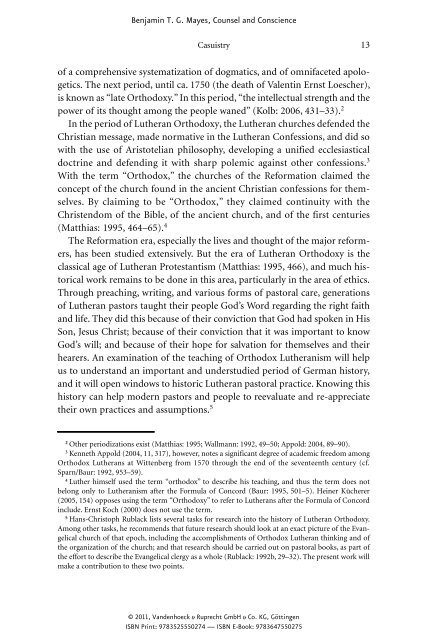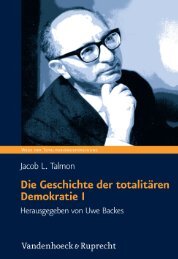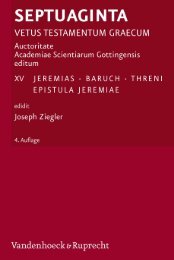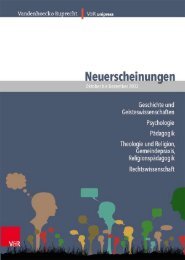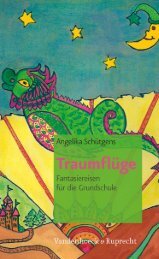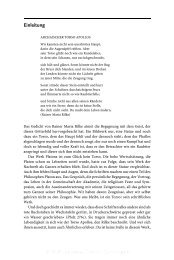Counsel and Conscience
Counsel and Conscience
Counsel and Conscience
Create successful ePaper yourself
Turn your PDF publications into a flip-book with our unique Google optimized e-Paper software.
Benjamin T. G. Mayes, <strong>Counsel</strong> <strong>and</strong> <strong>Conscience</strong><br />
Casuistry 13<br />
of a comprehensive systematization of dogmatics, <strong>and</strong> of omnifaceted apologetics.<br />
The next period, until ca. 1750 (the death of Valentin Ernst Loescher),<br />
is known as “late Orthodoxy.” In this period, “the intellectual strength <strong>and</strong> the<br />
power of its thought among the people waned” (Kolb: 2006, 431–33). 2<br />
In the period of Lutheran Orthodoxy, the Lutheran churches defended the<br />
Christian message, made normative in the Lutheran Confessions, <strong>and</strong> did so<br />
with the use of Aristotelian philosophy, developing a unified ecclesiastical<br />
doctrine <strong>and</strong> defending it with sharp polemic against other confessions. 3<br />
With the term “Orthodox,” the churches of the Reformation claimed the<br />
concept of the church found in the ancient Christian confessions for themselves.<br />
By claiming to be “Orthodox,” they claimed continuity with the<br />
Christendom of the Bible, of the ancient church, <strong>and</strong> of the first centuries<br />
(Matthias: 1995, 464–65). 4<br />
The Reformation era, especially the lives <strong>and</strong> thought of the major reformers,<br />
has been studied extensively. But the era of Lutheran Orthodoxy is the<br />
classical age of Lutheran Protestantism (Matthias: 1995, 466), <strong>and</strong> much historical<br />
work remains to be done in this area, particularly in the area of ethics.<br />
Through preaching, writing, <strong>and</strong> various forms of pastoral care, generations<br />
of Lutheran pastors taught their people God’s Word regarding the right faith<br />
<strong>and</strong> life. They did this because of their conviction that God had spoken in His<br />
Son, Jesus Christ; because of their conviction that it was important to know<br />
God’s will; <strong>and</strong> because of their hope for salvation for themselves <strong>and</strong> their<br />
hearers. An examination of the teaching of Orthodox Lutheranism will help<br />
us to underst<strong>and</strong> an important <strong>and</strong> understudied period of German history,<br />
<strong>and</strong> it will open windows to historic Lutheran pastoral practice. Knowing this<br />
history can help modern pastors <strong>and</strong> people to reevaluate <strong>and</strong> re-appreciate<br />
their own practices <strong>and</strong> assumptions. 5<br />
� Other periodizations exist (Matthias: 1995; Wallmann: 1992, 49–50; Appold: 2004, 89–90).<br />
� Kenneth Appold (2004, 11, 317), however, notes a significant degree of academic freedom among<br />
Orthodox Lutherans at Wittenberg from 1570 through the end of the seventeenth century (cf.<br />
Sparn/Baur: 1992, 953–59).<br />
� Luther himself used the term “orthodox” to describe his teaching, <strong>and</strong> thus the term does not<br />
belong only to Lutheranism after the Formula of Concord (Baur: 1995, 501–5). Heiner Kücherer<br />
(2005, 154) opposes using the term “Orthodoxy” to refer to Lutherans after the Formula of Concord<br />
include. Ernst Koch (2000) does not use the term.<br />
� Hans-Christoph Rublack lists several tasks for research into the history of Lutheran Orthodoxy.<br />
Among other tasks, he recommends that future research should look at an exact picture of the Evangelical<br />
church of that epoch, including the accomplishments of Orthodox Lutheran thinking <strong>and</strong> of<br />
the organization of the church; <strong>and</strong> that research should be carried out on pastoral books, as part of<br />
the effort to describe the Evangelical clergy as a whole (Rublack: 1992b, 29–32). The present work will<br />
make a contribution to these two points.<br />
© 2011, V<strong>and</strong>enhoeck & Ruprecht GmbH & Co. KG, Göttingen<br />
ISBN Print: 9783525550274 — ISBN E-Book: 9783647550275


